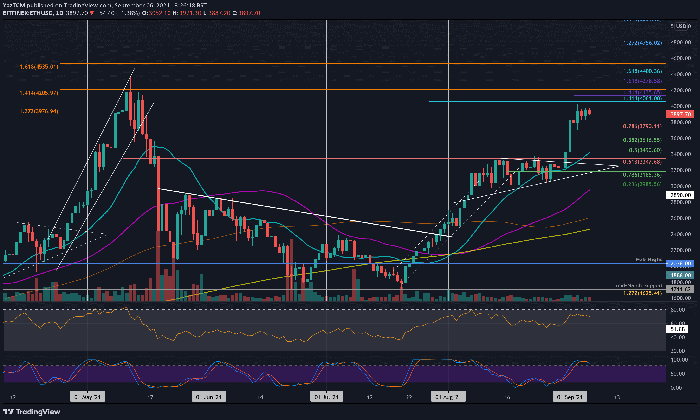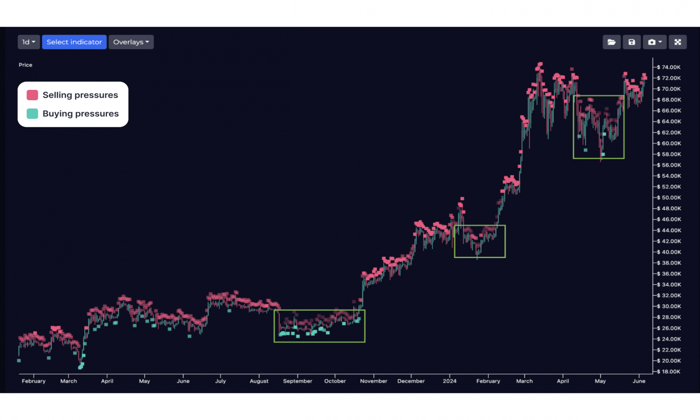Stablecoin regulation is becoming a pivotal issue in the evolving landscape of digital finance, especially following the recent passage of the STABLE Act by the US House Financial Services Committee. This legislation aims to provide a comprehensive framework for regulating stablecoin issuers, ensuring consumer protection while fostering innovation within the stablecoin ecosystem. With the support of lawmakers, the STABLE Act empowers the Office of the Comptroller of the Currency (OCC) to oversee these nonbank payment stablecoin issuers, a move that signifies the importance of federal stablecoin regulations in the financial market. As the US House stablecoin bill moves toward a full House vote, the implications of these regulations on the broader digital currency environment are profound, potentially reshaping the way stablecoins are integrated into mainstream finance. The ongoing dialogue surrounding stablecoin regulation underscores a commitment to harmonizing traditional banking principles with the dynamic nature of digital assets.
Addressing the governance of digital currencies, particularly those tethered to stable assets, has become essential amidst the rapid development of cryptocurrencies. The recent legislative momentum surrounding digital currency frameworks indicates a recognition of the need for robust oversight on entities issuing these assets, often referred to as payment tokens or digital dollar substitutes. With notable bills like the STABLE Act taking center stage, there is a clear push toward ensuring transparency and accountability among stablecoin providers. Federal oversight aims to strike a balance between innovation in the digital space and the protection of consumers, which is crucial for building confidence in this budding financial ecosystem. As discussions continue, the regulatory landscape for digital currencies is poised to evolve, reflecting both the challenges and opportunities inherent in this technological revolution.
Overview of the STABLE Act and Its Implications
The STABLE Act represents a significant step towards establishing comprehensive regulation in the stablecoin sector. By requiring stablecoin issuers to secure banking charters, the legislation aims to align these entities with established financial regulations, promoting transparency and stability within the financial ecosystem. This not only protects consumers but also aims to enhance the overall credibility of stablecoins as a payment method in the broader financial landscape.
As the market for stablecoins continues to grow, the introduction of the STABLE Act facilitates a structured approach to risk management and accountability. The bill empowers the Office of the Comptroller of the Currency (OCC) to oversee nonbank payment stablecoin issuers, ensuring they adhere to federal stablecoin regulations. This oversight is crucial for maintaining trust and stability in a sector that is poised to play a pivotal role in the future of digital finance.
The Role of Stablecoin Issuers in the Financial System
Stablecoin issuers, such as Tether and Circle, are integral to the functioning of the digital economy, providing users with a stable alternative to volatile cryptocurrencies. By tethering their currencies to traditional assets like the US Dollar, these issuers aim to facilitate seamless transactions while reducing the risks associated with price fluctuations. The STABLE Act places these issuers under the regulatory oversight of federal authorities, which is a key move towards integrating them into the traditional banking system.
With the market currently dominated by a few major players, the regulatory framework established by the STABLE Act could level the playing field for emerging stablecoin issuers. This would promote healthy competition and innovation within the stablecoin ecosystem, allowing new entities to thrive while adhering to standardized rules that ensure consumer protection and financial stability.
Impact of Stablecoin Regulations on Consumers
The implementation of the STABLE Act promises to benefit consumers significantly by enhancing their protection in a rapidly evolving financial landscape. Increased transparency and regulatory compliance among stablecoin issuers mean that consumers can have greater confidence in the stability and security of their digital assets. This regulatory framework aims to mitigate risks associated with unregulated stablecoin markets, ensuring that consumers are safeguarded against potential financial misconduct.
Moreover, stablecoin regulations could lead to improved service offerings from issuers, including faster transaction times and lower fees. As stablecoins become more mainstream and integrated into everyday transactions, consumers are likely to reap the benefits of a more efficient financial system, ultimately leading to cost savings and enhanced access to financial services.
The Future of US Dollar as the World’s Reserve Currency
The passage of the STABLE Act is crucial for reinforcing the position of the US Dollar as the world’s reserve currency. By ensuring that stablecoins are tied to the Dollar and regulated under federal laws, the US government can maintain control over the monetary system while promoting the Dollar’s usage in international trade. This strategic positioning is essential as digital currencies continue to gain traction globally.
As stablecoins become increasingly utilized for cross-border transactions, the regulatory framework established by the STABLE Act can enhance the attractiveness of the US Dollar, encouraging more countries to use it as a primary currency for trade and finance. This not only cements the Dollar’s role in the global economy but also promotes American values and economic leadership on the international stage.
Comparing the STABLE Act with Other Regulatory Proposals
In addition to the STABLE Act, other legislative measures, such as the GENIUS Act, are currently under consideration to provide a comprehensive regulatory approach to the stablecoin ecosystem. While the STABLE Act focuses on issuer regulation and consumer protection, the GENIUS Act aims to define reserve rules, ensuring that stablecoins remain pegged to their underlying assets. Together, these proposals reflect a multi-faceted approach to stabilize and govern the burgeoning stablecoin market.
The coexistence of these regulatory frameworks signals a transformative period for the crypto financial system. By addressing various aspects of stablecoin operation, from issuance to reserves, the proposed regulations will help create a robust legal environment that satisfies both innovators and regulators. This balance is essential for fostering growth in the digital finance sector while safeguarding consumer interests.
Challenges in Implementing Stablecoin Regulations
Although the STABLE Act and similar legislations are designed to streamline the operation of stablecoins, various challenges remain. One of the key issues is the diverse array of stablecoin models currently in operation, which may not fit neatly into a one-size-fits-all regulatory framework. For example, algorithmically stabilized coins require different regulatory considerations compared to those backed by underlying assets.
Additionally, the international nature of stablecoin transactions poses complexities in enforcement and compliance. Regulators must navigate varying standards and practices from other jurisdictions, ensuring that US-based stablecoin issuers can operate effectively while complying with both domestic and international laws. Adapting to these diverse regulatory climates will be crucial for the successful implementation of the STABLE Act.
Consumer Confidence in the Stablecoin Market
Consumer confidence is vital for the long-term success of the stablecoin market. The STABLE Act aims to bolster this confidence by instituting regulatory oversight and transparency measures that are expected to protect consumers. With enhanced clarity regarding the operations of stablecoin issuers, individuals can feel more secure in utilizing digital currencies for everyday transactions.
As the legislation progresses and begins to take effect, it is anticipated that consumer trust in stablecoins will grow. This could lead to increased adoption rates, opening new avenues for financial inclusion and innovation. The STABLE Act’s commitment to regulatory clarity and consumer protection serves as a foundation for rebuilding confidence in the stablecoin ecosystem.
Effects of Stablecoin Regulation on Web3 Businesses
The advancement of stablecoin regulations under the STABLE Act could have significant implications for Web3 businesses. By providing a clear regulatory framework, new opportunities for innovation and growth in this digital landscape are likely to emerge. As Web3 technologies evolve, harmonizing stablecoins with federal regulations will enable developers and startups to create solutions that leverage the strengths of both decentralized finance and traditional finance.
Moreover, stablecoins can play a pivotal role in facilitating transactions and powering decentralized applications. With the STABLE Act, stakeholders in the Web3 space can confidently integrate stablecoins into their platforms, knowing that they comply with necessary regulations. This regulatory clarity will pave the way for mainstream adoption, enhancing the overall usability of Web3 technologies.
The Congressional Journey of the STABLE Act
The STABLE Act has undergone a notable journey in Congress, reflecting the growing recognition of the need for stablecoin regulations. Initially introduced in 2020, the bill faced numerous challenges before gaining traction in the current legislative session. With its recent passage through the House Financial Services Committee, the act’s supporters are optimistic about its chances in a full House vote and subsequent Senate deliberations.
This journey underscores the importance of dialogue and cooperation among lawmakers to address the unique challenges posed by cryptocurrencies and stablecoins. As discussions continue, the evolving nature of the legislative process highlights the need for stakeholders to remain engaged in shaping a regulatory environment that promotes innovation while ensuring consumer protection.
Frequently Asked Questions
What is the STABLE Act and how does it relate to stablecoin regulation?
The STABLE Act, or the Stablecoin Tethering and Bank Licensing Enforcement Act, is a legislation aimed at regulating stablecoin issuers by mandating that they obtain banking charters. This act seeks to ensure that the stablecoin ecosystem operates under traditional banking regulations, thereby enhancing consumer protection and promoting the U.S. dollar as the global reserve currency.
How do federal stablecoin regulations affect stablecoin issuers?
Federal stablecoin regulations like the STABLE Act require stablecoin issuers to obtain oversight from the Office of the Comptroller of the Currency (OCC). This regulatory framework is designed to enforce transparency, accountability, and safety among issuers, ensuring that the stablecoin ecosystem is regulated similarly to traditional banks.
What changes were made in the amended version of the STABLE Act passed by the US House?
The amended STABLE Act passed by the US House includes provisions that empower the OCC to approve and supervise federally qualified nonbank payment stablecoin issuers. These changes reflect a shift towards a more structured regulatory environment for stablecoins, establishing guidelines for their operation and aiming to protect consumers.
What impact might the STABLE Act have on consumers and businesses within the stablecoin ecosystem?
The STABLE Act aims to protect consumers by imposing regulatory standards on stablecoin issuers, potentially leading to increased trust in stablecoins. For businesses, this regulation could make payments faster, cheaper, and more accessible, ultimately benefiting both consumers and businesses using stablecoin transactions.
What other bills related to stablecoin regulation are currently being proposed?
In addition to the STABLE Act, the Guiding and Establishing National Innovation for US Stablecoins (GENIUS) Act is also under consideration. This bill focuses on establishing reserve rules for stablecoin issuers, complementing the regulatory framework set forth by the STABLE Act, and further shaping the future of the stablecoin ecosystem.
How do the recent stablecoin regulations aim to enhance the U.S. dollar’s position globally?
Stablecoin regulations, particularly through measures like the STABLE Act, are designed to solidify the U.S. dollar’s status as the world’s reserve currency by standardizing stablecoin practices. By promoting a stable regulatory environment, these measures can enhance confidence in U.S. financial products, affording them greater use in international markets.
What role does the Office of the Comptroller of the Currency (OCC) play in stablecoin regulation as per the STABLE Act?
Under the STABLE Act, the Office of the Comptroller of the Currency (OCC) is granted authority to approve and oversee federally qualified nonbank payment stablecoin issuers. This oversight aims to ensure that stablecoins operate under strict regulatory standards, enhancing consumer protection and financial stability within the stablecoin ecosystem.
How has the stablecoin market changed in light of new regulations like the STABLE Act?
The stablecoin market is adapting to new regulations, like the STABLE Act, which may influence the strategies of existing issuers such as Tether and Circle. As these giants navigate compliance with federal regulations, their operational capabilities, market dynamics, and consumer trust could undergo significant transformations.
| Key Point | Details |
|---|---|
| STABLE Act Passed | The STABLE Act was passed by the US House Financial Services Committee with a 32 to 17 vote, progressing towards full House and Senate approval. |
| Purpose of the Act | To regulate stablecoin issuers by requiring them to obtain banking charters and follow traditional banking regulations. |
| Key Features | Gives the Office of the Comptroller of the Currency authority to supervise federally qualified nonbank payment stablecoin issuers. |
| Support for the Act | Leaders believe the Act will protect consumers and enhance the US Dollar’s status as a reserve currency while promoting Web3 innovation. |
| Market Landscape | Currently dominated by Tether (60% market share) and Circle (25% market share). USDS has 3.4% market share. |
| Related Legislation | Other bills like the GENIUS Act are also being proposed to establish regulatory frameworks for stablecoins. |
Summary
Stablecoin regulation is advancing with the recent passage of the STABLE Act by the US House Financial Services Committee. This legislation is a significant step toward establishing a framework for stablecoin issuers, promoting consumer protection, and maintaining the US Dollar’s global status. As stablecoins become a crucial part of the financial ecosystem, the need for structured regulation is more pressing than ever. By ensuring that these digital currencies are governed under banking regulations, the STABLE Act aims to create a safer environment for both users and businesses in the evolving landscape of digital finance.
Stablecoin regulation is rapidly becoming a focal point in the financial landscape, especially with the recent passage of the STABLE Act by the US House Financial Services Committee. This legislation aims to establish a robust regulatory framework for stablecoin issuers, ensuring they operate with transparency and accountability while safeguarding consumer interests. As the stablecoin ecosystem expands, the need for structured federal stablecoin regulations has never been more critical, particularly in relation to maintaining the U.S. dollar’s dominance as a global reserve currency. The US House stablecoin bill reflects a significant stride towards regulating digital assets and fostering innovation within this burgeoning market. With bipartisan support, the STABLE Act could pave the way for a safer and more efficient digital economy, aligning with the broader goals of enhancing market integrity and consumer protection.
The evolving landscape of digital currencies has brought forth a pressing need for comprehensive oversight, particularly regarding digital asset-backed currencies known as stablecoins. Recently, legislative efforts have intensified with the introduction of the STABLE Act, designed to impose necessary regulations on stablecoin providers to promote a secure and stable financial environment. These initiatives are critical not only for consumer protection but also for fostering a thriving market for nonbank payment systems. As transactions increasingly shift towards digital platforms, establishing guidelines for stablecoin issuers becomes paramount to ensure the stability and reliability of these financial instruments. Hence, the conversation surrounding regulatory measures in the digital currency domain is more relevant than ever.















